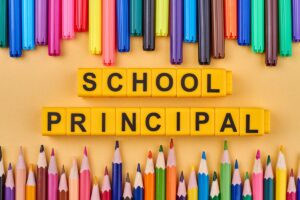Some educators are natural leaders. Their influences are felt in the classrooms, in their departments, on the field in coaching roles, and eventually in management positions, such as administration. And because they have such an impact on thousands of lives throughout their careers, having a sustainable leadership in a school district is directly correlated to the success of the students, families, and all members of the surrounding communities.
The first priority of administrators, whether as an assistant principal or a superintendent, is to implement learning in a way that engages students academically, then socially, and emotionally. Students need to enjoy learning, but they also need to be in comfortable atmospheres to do that. Teachers need to connect and build relationships so that students can share their thoughts and opinions, while having the emotional maturity to handle criticism in order to grow. Having leadership changes will never enable the sustainability of these types of requirements.
What is Sustainable Leadership?
Sustainable leadership focuses on consistent learning through achievement and growth, creating permanent atmospheres of positive culture, with a strong desire to learn for learning’s sake, and implementing changes that benefit all members of the school community.
So, what does sustainable leadership look like in schools? The vision will appear differently for teachers versus administrators, for administrators versus students, and for teachers versus students. (This is not to say that “versus” means in conflict or competitively but instead as a perception between groups.)
For the educators, sustainable leadership is not a carousel of administrators moving in and out of positions. Educators need to be able to lean on their administration in the fact that their principals are present, easy to approach, willing to listen, and capable of supporting their teachers with whatever they may need. Administrators must understand the requirements of their teachers and what will best support their classrooms, their pedagogical styles, and ultimately what will make both the teachers and students grow.
Teachers also require clear expectations and communication from their administrators. They need constant determination to achieve those expectations, especially when goals are introduced. Sustainable leadership relies on consistently building onto previous goals while trying to achieve new ones. This can only be done when administrators are in place for lengthy periods of time. Constant change, while a steady variable in education, cannot occur in these integral positions.
For administrators, sustainable leadership can happen when the ability to make decisions is supported by upper administration. There has to exist a relationship of trust and communication in order for initial steps to take place. Whether with changes in curriculum or restructuring departments or enhancing a positive behavior support system, administrators need to have vision, perseverance, the ability to improvise, and especially the support of their superiors.
And these are multi-year plans, which means administrators must know they are safe in their positions, so that they can implement the changes with buy-ins by the teachers. They must be able to present some urgency and calculable reasoning that justifies the changes. This is a strong way to create leadership that continue to transition through each year and build upon the successes of the vision and mission statements for each school.
Sustainable leadership about administrators is not just about having a terrific and motivated principal. In order for a system to continue its success, it must transition with continuity. Principals must take that leadership role and then train or support those assistants who are part of the team to maintain continuity. It is as much their role to ensure a positive transition as it is the next person who steps into that position. Comprehending this will ensure that leadership spreads as a lasting legacy.
Implementing sustainable leadership practices can vary from school to school due to the uniqueness of each district.
Some schools may focus on curriculum development. Leadership must have an organized and clear vision of the elements of each course, as well as the instruction and assessment components to create a balanced system. The leaders must help support the teachers with a sense of urgency, professional development appropriate to the tasks, and optimistic oversight with open communication and collaboration. Continuous review and discussion are essential to the process. Administrators making themselves experts in this area builds credibility among the teachers and sustains a much stronger momentum for growth toward the school’s goals.
Always at the top of the priority list is the desire to improve achievement and growth on the high stakes standardized tests, while mitigating the amount of time “teaching to the test.” This can be evaluated not only from a curriculum redevelopment but also from numerous data points. Surveys pertaining to the self-efficacy of students’ feelings toward school, work, ethics, pride, etc., can help but also through truancy, academic failures, and those students who are considered on the bubble of proficient or basic performances.
And depending on the leadership, schools can thrive from strengthening their reading programs from elementary to middle school; it may stem from an incentive-based program for students who are habitually truant to attend school, or maybe it even it is exploring the ways to improve language skills in school districts with a majority of diversity regarding ESL or ELL students who need support.
The key to all of these examples is to have a strong leadership that understands it will take immense work to establish the type of culture and desire for a district to overcome the developing challenges. And with a powerfully established leadership in control that provides long-term support and positive transitions, sustaining leadership will force a district to celebrate its successes.




